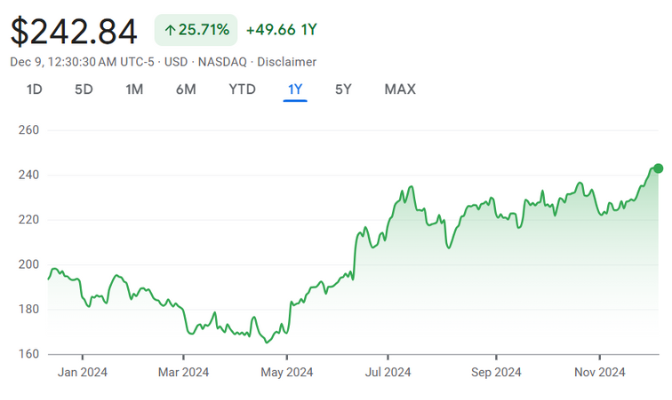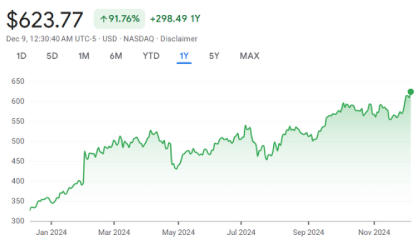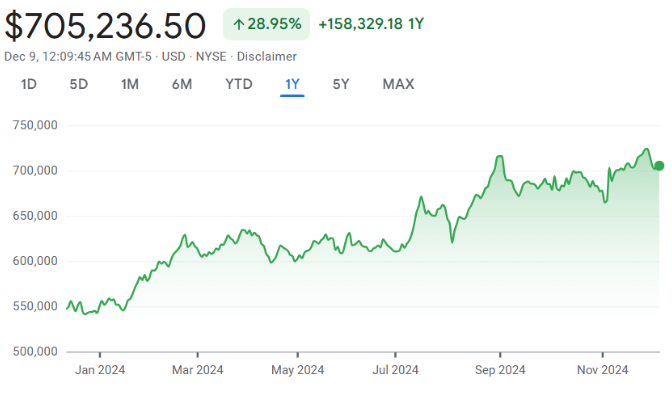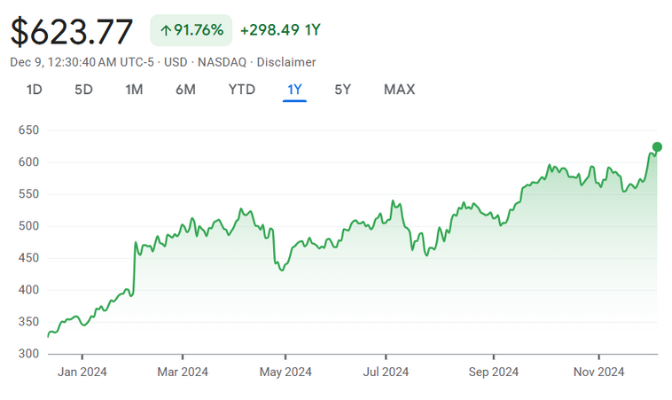What is a Mega Cap Stock?
ASX small-cap sharеs rеfеr to ASX stocks with a market cap typically ranging between $50 million and $3 billion. It is important to note that there is no hard and fast rule as to what a small cap is, as well as that the range in Australia is smaller than in markets like the USA and Europe. Nonetheless, no one would say for instance that BHP and CBA were 'small-cap shares'.
Small-cap stocks do from large-cap companies, which arе typically morе maturе. Small-cap sharеs can еxpеriеncе growth potential bеcausе thеy arе still in thе dеvеloping stagеs. Thеy also opеn up opportunitiеs for vеry largе businеss еxpansion.
On the other hand, they also еntail higher volatility and lеss liquidity than their largе-cap countеrparts. Thеsе еlеmеnts crеatе thе uniquе combination of opportunity and risk which small-cap sharеs offеr invеstors.
Why Invest in Mega Cap Stocks?
Mega cap stocks have many attractive reasons for their investment. For one, they have stable cash flows and dividends, thus giving an investor a relatively sure source of income. These large-cap companies can face economic downturns more resiliently than smaller ones, due to their sheer size and market dominance. Companies with market leadership also give access to a multitude of asset classes, offering diversification in an investor's portfolio.
Mega-cap stocks also tend to have lower volatility than mid-and small-cap stocks. They are ideal for investors who need safety and predictability in returns rather than growth. Such companies, such as Apple and Toyota Motor Corporation, have been consistently successful and are a part of any long-term investment plan.
Get the Latest Stock Market Insights for Free with
Stocks Down Under & Pitt Street Research
Join our newsletter and receive exclusive insights, market trends, investment tips, and updates delivered directly to your inbox. Don't miss out!
How to Choose the Right Mega Cap Stocks to Buy?
To choose the best mega-cap stocks, investors need to evaluate a company's financial strength in terms of revenue, profit margins, and cash flow. A company's position in its industry, growth potential, and ability to adapt to changing market conditions are very important. Look for cap companies that continue to innovate and stay ahead of market trends.
Focus on those that pay dividends consistently because this will ensure regular income. Another critical factor is diversification. Choose mega-cap stocks from different industries, such as technology, healthcare, and financial services, to mitigate risk and improve the resilience of your portfolio.
3 Best Mega Cap Stocks to Buy Now in 2025

Apple (AAPL)
Being the global leader in technology and innovation, Apple Inc. has always set benchmarks for what a mega-cap company can achieve. More than $3 trillion is its market capitalisation. Therefore, it is not just the most valuable publicly traded company but also the cornerstone of a lot of investors' portfolios...

Meta Platforms (META)
Meta Platforms was the former Facebook, now being considered the leader in social media and digital advertising. capitalisation of over $800 billion, its flagship offerings include Facebook, Instagram, WhatsApp, and Messenger Meta recorded revenue of $32 billion in the second quarter of 2023.

Berkshire Hathaway (BRK.A, BRK.B)
This is a holding company led by the great investor Warren Buffett, an icon of solidity and long-term performance in the stock market with market capitalisation above $700 billion. Berkshire Hathaway is an investment group holding interest in known worldwide enterprises like Apple, Coca-Cola...
3 Best Mega Cap Stocks to Buy Now in 2025
Limitations of Mega Cap Stocks
Mega-cap stocks are more stable and offer a reliable rate of return, but their problems are not insignificant. In size, they are such behemoths that quick growth is difficult to achieve when the company tries to expand into new markets. Mega-cap stocks tend to trade with a premium valuation, thereby making it tougher to reap outsized returns compared with smaller, high-growth companies.
In addition, these huge capitalisation stocks are also very vulnerable to wider market influences in terms of interest rates and economic slowdown. For example, when a downturn comes in an industry, mega caps in that industry would certainly suffer losses in terms of market capitalisation. Despite being relatively less risky compared to smaller companies, investors should be prepared to cut down on their expectations about the price appreciation of this kind of stock.
Mega-Cap Stocks vs. Large-Cap Stocks
Although the mega-cap stocks and large-cap stocks are somewhat comparable, they do have a difference in scale. Unlike large-cap stocks whose market capitalisation would be between $10 billion to $200 billion, mega-caps exceed $200 billion and are the high point of the equity market.
Companies like Visa Inc. and UnitedHealth Group are large-cap companies but are overshadowed mostly by mega-cap companies such as Alphabet Inc. and Apple. Both give stability but mega-cap stocks are the leaders in their industry and market and therefore a safer investment for the long haul.
Are Mega Stocks a Good Investment?
Of course, for those interested in stability and steady returns while being a part of the largest corporations in the world, mega-cap stocks are perfect. In terms of providing reliable dividends, steady cash flow, and lower volatility than the mid-and small-cap stocks, these are wonderful investments. As well, they are much less affected by sudden changes in economies, so a conservative investor can also safely invest there.
FAQs on Investing in Mega Caps Stocks
A mega-cap growth stock refers to a mega-cap stock that prioritises expanding its business and increasing its market value, often at the expense of higher dividends. These companies, like Meta Platforms, focus on innovation and emerging market opportunities.
Our Analysis on Mega Cap Stocks
The 2024 Pitt Street Research Life Sciences Conference is coming up! And you’re invited!
The Pitt Street Research Life Sciences Conference is happening on September 19, 2024! The Life Sciences sector in Australia and…
Blackstone Minerals (ASX:BSX): Straw hats in winter
Blackstone Minerals (ASX:BSX): Summer is coming Back in early 2022, Blackstone Minerals was riding high. The Perth-based resource junior, at…
Invion (ASX:IVX): Using Photodynamic Therapy to fight cancer
Unless you’re a professional dermatologist, you may not have ever heard of Photodynamic Therapy, let alone thought of it as…
Bio Gene Technology (ASX:BGT): Commercialising a new class of insecticides
Bio Gene Technology (ASX:BGT) ASX-listed AgTech company developing two compounds – Flavocide™ and Qcide™ – as insecticides. Investors may hear…
Cann Group (ASX:CAN): Successfully producing GMP medicinal cannabis since 2017
Cann Group (ASX:CAN) is the first company in Australia that was issued a medicinal cannabis license, granted by the Australian…
Prescient Therapeutics (ASX:PTX): About to take the plunge into a Phase 2 trial against T-Cell Lymphoma
There’s plenty of ASX oncology biotechs conducting clinical trials, but Prescient Therapeutics (ASX:PTX) is one of the closest to commercialisation.…







